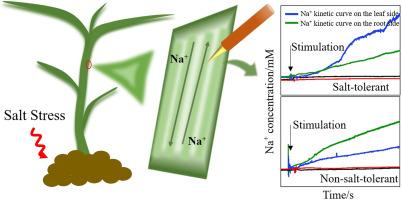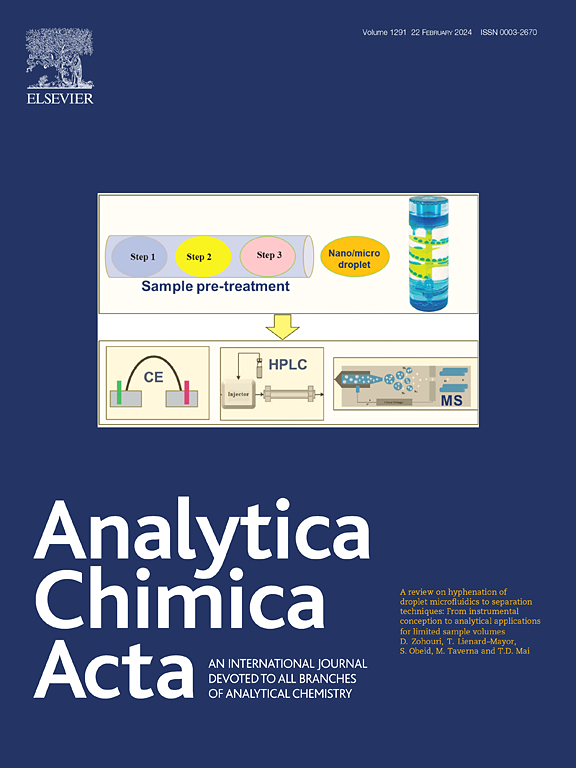A microneedle sensor for in-vivo sodium ion detection in plants
IF 5.7
2区 化学
Q1 CHEMISTRY, ANALYTICAL
引用次数: 0
Abstract
This study introduces a novel microneedle-type potentiometric sensor designed for the in-vivo detection of sodium ions (Na+) in plant tissues. The development of this sensor is crucial for advancing our understanding of plant responses to salinity stress. The microneedle sensor employs a highly selective Na+ ion carrier and integrates a solid-contact layer made of poly(3,4-ethylenedioxythiophene)-poly (sodium 4-styrenesulfonate) (PEDOT: PSS) prepared by electropolymerization. Due to its excellent conductivity and high chemical stability, PEDOT:PSS significantly reduces the surface impedance of the electrode, enhances charge transfer efficiency, and thereby improves the sensor's response sensitivity and stability. The sensor achieves a linear detection range of 1 × 10−2 to 1 × 10−5 M, with a slope of 56.55 ± 0.25 mV/decade and a detection limit of 1.94 × 10−6 M. The fabrication process was optimized by refining the membrane formulation, ensuring precise control over membrane thickness, and determining the optimal conditioning time, all essential for large-scale production and agricultural applications. In addition, we evaluated the sensor's ability to detect Na+ concentration changes in both artificial culture media and actual plant tissue samples. The sensor's performance was assessed through its capability to monitor Na+ concentration changes in both artificial culture media and real plant tissue samples, with results benchmarked against the standard method (ICP-OES), confirming its accuracy and reliability. Moreover, application trials involving rice seedlings validated the microneedle sensor's efficacy for in vivo detection of Na+, providing a robust tool for understanding plant physiological responses to salt stress. These findings not only offer new insights into plant adaptation mechanisms but also establish a practical platform for selecting salt-tolerant cultivars and enabling rapid salt-level assessment in agricultural practices.


求助全文
约1分钟内获得全文
求助全文
来源期刊

Analytica Chimica Acta
化学-分析化学
CiteScore
10.40
自引率
6.50%
发文量
1081
审稿时长
38 days
期刊介绍:
Analytica Chimica Acta has an open access mirror journal Analytica Chimica Acta: X, sharing the same aims and scope, editorial team, submission system and rigorous peer review.
Analytica Chimica Acta provides a forum for the rapid publication of original research, and critical, comprehensive reviews dealing with all aspects of fundamental and applied modern analytical chemistry. The journal welcomes the submission of research papers which report studies concerning the development of new and significant analytical methodologies. In determining the suitability of submitted articles for publication, particular scrutiny will be placed on the degree of novelty and impact of the research and the extent to which it adds to the existing body of knowledge in analytical chemistry.
 求助内容:
求助内容: 应助结果提醒方式:
应助结果提醒方式:


